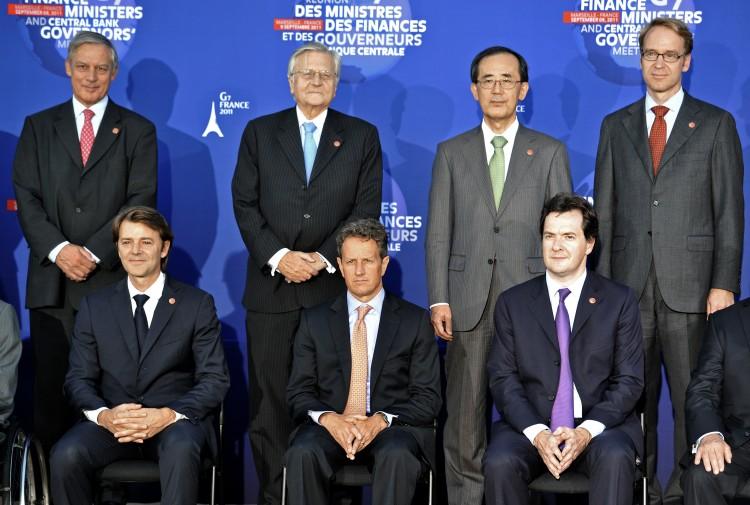It was supposed to be a prelude to the G-20 meeting in Moscow this weekend. The Group of Seven (G-7) finance ministers, however, managed to upset currency markets with conflicting statements.
“We, the G7 Ministers and Governors, reaffirm our longstanding commitment to market determined exchange rates and to consult closely in regard to actions in foreign exchange markets,” said an initial statement released Feb. 12.
The market took that as an indication that a recent move by the Bank of Japan to print an unlimited quantity of yen was supported by the G-7. This prompted the yen to sell off against the dollar, with the dollar hitting a high of 94.4 yen earlier Feb. 12.
This move apparently prompted the G-7 to leak some comments later, indicating that the move in the yen was cause for concern. A G-7 official told Reuters, “The G7 statement signaled concern about excess moves in the yen.” Promptly the dollar weakened against the yen, falling to 93 yen by late morning.
This confusion gives rise to the broader concern about how currencies are used to steer domestic policy. The G-7 statement rules out that currencies would be used to achieve domestic policy objectives. Market observers, however, believe this to be mere posturing. According to some, a full-blown currency war is in the making.
Rickards: G-7 Statement ‘A Farce’
Jim Rickards, author of the New York Times bestseller, “Currency Wars, The Making of the Next Global Crisis,” does not believe the G-7 is not using the currency to boost their economic performances.
“G7 statement on Currency Wars a farce [sic] since U.S. started it in 2010. … Low FX is backdoor to inflation when policy fails,” he said on Twitter, commenting on the fact that G-7 officials said they wanted to create domestic inflation and not weaken the currency.
The officials referred to a recent move of the Bank of Japan to print unlimited amounts of money in order to spur growth and create domestic inflation. “It was meaningful for us as (the G7) properly recognizes that steps we are taking to beat deflation are not aimed at influencing currency markets,” Japanese Finance Minister Taro Aso told reporters.
The Bank of Japan on Jan. 22 announced a plan to provide open-ended easing to spur domestic inflation and growth. The Japanese central bank will start buying 13 trillion yen ($145 billion) worth of government securities per month starting in January 2014.
In the United States, the Federal Reserve already started printing $85 billion per month as of January 2013.
According to John Paulson, a New York based hedge fund manager; this policy has put Japanese exporters in trouble, prompting a Japanese policy move to weaken the yen. “The problem is that the U.S. started printing. We got into a competitive situation where the other major currencies started to print massively,” he said in a speech in New York in January.
Paulson also thinks that Japan cannot be the only major country that doesn’t print money and confirms Rickard’s opinion that at least Japan is weakening its currency in order to boost exports: “In order to maintain sales, [the Japanese corporations] had to cut prices. They were getting killed with the strong yen. At this point [the Bank of Japan] didn’t have a choice.”





